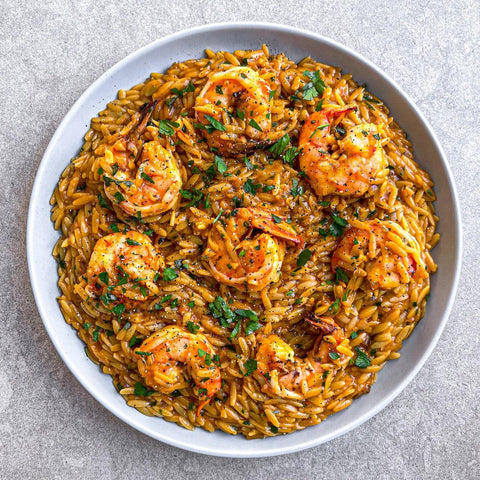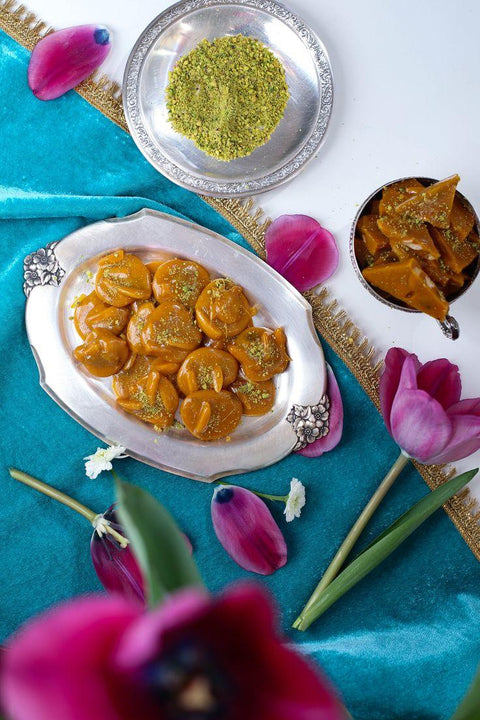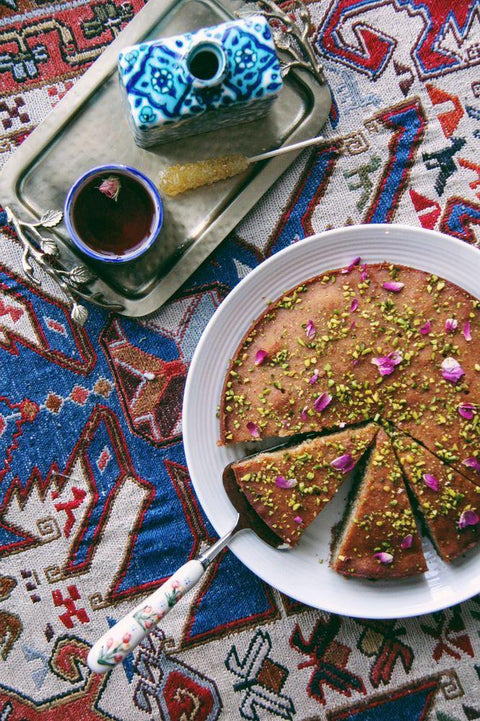Recipes

After a memorable evening at Chicago's Andros Taverna, where we savoured a delectable dish named 'Seafood Orzotto,' our craving for saffron and orzo grew. As we delved into our culinary exploration, it was fascinating to uncover the Italian origins of orzo, despite its Mediterranean and Middle Eastern prevalence. Our hearts and taste buds were set on the enchanting 'King Prawn Orzo with Tomato and Saffron' recipe. But first, let's unveil the intriguing nature of orzo. With its rice-like appearance, you could easily mistake it for risotto, though the two are fundamentally distinct. Orzo, also known as risoni (Italian for 'barley'), derives its name from its barley-like resemblance. While most orzo is crafted from semolina flour, a more vibrant tricoloured variety emerges from sun-dried tomatoes and spinach infusion, giving it a dash of colour.

Afghan and Japanese cuisines, despite hailing from opposite corners of the globe, share an intriguing culinary kinship. These seemingly divergent traditions intersect on a universal plane where rice reigns supreme, serving as the cornerstone of countless dishes. Emphasizing the significance of seasonality, both Afghan and Japanese cultures exalt fresh, locally-sourced ingredients, allowing nature's bounty to dictate their culinary creations. An alliance of seasonings and spices, whether Afghan cumin and cardamom or Japanese soy sauce and miso, elevate their dishes to extraordinary heights. The realm of noodles welcomes both, with Afghanistan's 'ashak' paralleling Japan's udon and soba noodles. Grilled meats, from Afghan kebabs to Japanese yakitori, unite in the allure of smoky, charred flavours. Stuffed grape leaves meet sushi rolls, displaying a shared love for wrapping ingredients into harmonious delights. And in the tranquil embrace of tea culture, Afghan green tea finds kinship with Japan's diverse green tea offerings. These shared elements paint a vivid portrait of the culinary universality that transcends borders. For those seeking a creative fusion, consider saffron sushi rolls, where the earthy infusion of saffron imbues a Japanese classic with Afghan intrigue.

Creating a homemade Pumpkin Spice Latte (PSL) is akin to embracing the essence of autumn in a cup. This detailed recipe serves as your expert companion, guiding you through each step with care, right from your own cozy kitchen. From selecting your preferred milk, be it the creamy indulgence of whole milk, the lighter 2%, or a non-dairy alternative like almond, soy, or oat milk, to the star ingredient of 100% pure pumpkin puree, not to be confused with the sweeter pumpkin pie filling. You'll expertly balance sweetness with granulated sugar or explore the rich depths of maple syrup. The blend of warm, aromatic spices, vanilla extract, and a shot of strong coffee or espresso, combined with optional indulgences like whipped cream and a sprinkle of cinnamon or nutmeg, yields a delightful seasonal treat that can be fully customized to suit your palate. Whether you savour it curled up indoors or take it on an autumn adventure, your homemade PSL promises to be the epitome of fall flavours and comforting coziness.

Sohan, a traditional Persian saffron brittle toffee, hails from Qom, Iran, with a tale of royal endorsement by Naser al-Din Shah Qajar. Originally crafted by women, Sohan's recipe remained a closely guarded secret, passed down through generations. Its various types include Sohan Halwa, Sohan Asali (honeyed brittle), sesame brittle, and Sohan Gaz (gaz brittle). The mysterious aspect of Sohan lies in the unique methods used to weigh ingredients, ranging from stones to shoes. This exquisite Persian dessert, known for its rich flavors, features a delightful combination of saffron, nuts, honey, and cardamom. It is a symbol of Iranian hospitality, cultural heritage, and festivity, often shared with guests during celebrations and cherished as a piece of Iran's culinary history.

Baklava, deeply rooted in the cultural traditions of Turkey, Greece, and the Middle East, traces its origins to the ancient Assyrian Empire in the eighth century B.C.E. Originally, it consisted of humble flatbreads adorned with chopped nuts, reserved for special occasions, and it gradually spread through ancient lands. Over time, it evolved, with the Ancient Greeks and Romans introducing their own sweet variation called 'placenta cake.' However, its transformation reached its zenith during the Ottoman Empire about 500 years ago, where it gained almost sacred status and featured prominently in Ramadan feasts. This cultural icon wasn't limited to one religious group; it held significance for Ottoman Christians and Jews alike. Today, saffron almond baklava continues this rich tradition, offering a taste of Middle Eastern heritage through its layers of phyllo pastry and saffron-infused almonds, symbolizing centuries of cultural depth and flavor.

Have a cup filled with the rich flavour saffron infused in warm milk during the chilly weather.
Treat yourself with a cup of saffron milk, experience the richness of this velvety beverage that transcends ordinary tastes and transports you to a realm of exquisite flavours and warm comfort. Saffron, known as the 'golden spice,' infuses this creamy elixir with its unparalleled aroma and subtle, honey-like sweetness. Each sip is a journey through the rich history and culture of saffron, where its vibrant crimson threads have been treasured for centuries. Whether enjoyed as a soothing bedtime drink or a daytime indulgence, saffron milk promises not just a tasteful sensation but a true sensory experience.
